Summary
- Mandatory task: no
- Word count: 140-190
- Main characteristics: typical layout, appropriate register, you need to adapt to the specific task
- Register: formal or informal depending on the task
- Structure: Opening formula & paragraph, 2-3 topic paragraphs, closing paragraph & formula
- Language: typical phrases for opening and closing formula depending on the register of the specific task
- Examples
Informal email
Hi David,
How have you been? It’s really been ages since I last heard from you.
I’m really stoked that your friends want to come to my area to learn about its past and I hope I can give you a couple of tips.If your friends want to see interesting places and learn something about Barcelona, they should absolutely swing by La Sagrada Familia or Casa Batlló where they can get tons of info about one of Barcelona’s most famous people Antoni Gaudí and modernism.
In terms of getting around I would recommend grabbing one of the tourist tickets for public transport because it doesn’t cost the world and you can simply jump on all the buses, trains and even the metro, or your friends could rent a bike as everything’s close by in the city.
Well, that’s all for now. I hope your friends are going to have a blast and drop me a line if you need anything else, OK?
Have a good one and catch up soon.
Best wishes,
Phill
Formal letter
Dear Mrs Hopkins,
I am writing in regards to your advertisement which I found in the London Globe and I would like to apply to join your party on your trip around the globe.
The opportunity sounds very attractive to me and I would love to join your group so as to broaden my knowledge of different cultures, cuisines and peoples.
So far, I have travelled in Europe, especially in Spain and the UK, where I met many interesting people with whom I developed friendships that I value enormously in my life.
As to what I can bring to the table, I believe that my social and cooking skills as well as my language abilities – I speak English, Spanish and German fluently – could tremendously benefit the group.
Thank you in advance for considering my application. I am available for an interview Monday to Friday from 8 to 11 o’clock in the morning and I look forward to hearing from you soon.
Yours sincerely,
Teacher Phill
Introduction
An email/a letter is written in response to the situation outlined in the question. Letters and emails in the B2 First Writing paper will require a response which is consistently appropriate in register and tone for the specified target reader. Candidates can expect to be asked to write letters or emails to, for example, an English-speaking friend or colleague, a potential employer, a college principal or a magazine editor.from: Cambridge English First Handbook for Teachers
Emails and letters are one of the tasks in the second part of the writing exam, which means that you can decide if you want to choose it or one of the other options available to you (reviews, reports, articles or, if you do FCE for Schools, stories).
- Cambridge B2 First (FCE): How to Write an Email/Letter
- Cambridge B2 First (FCE): How to Write an Essay
- Cambridge B2 First (FCE): How to Write a Review
- Cambridge B2 First (FCE): How to Write a Report
- Cambridge B2 First (FCE): How to Write an Article
- Cambridge B2 First (FCE): How to Write an Email/Letter
- Cambridge B2 First (FCE): How to Write an Essay
So different and yet so similar
Alright, writing letters and emails is definitely a huge topic as there are some important differences between the two which you should absolutely know, and I thought about breaking this post up into two, but letters and emails in the FCE exam are also very similar so we’re going to make this happen in one article.
Writing emails/letters is a pretty clear task with well defined requirements for content, layout, structure and language. Knowing these criteria will help you understand this type of writing task a lot better and by the end of this post you should be able understand exactly what you have to do when you sit down and take your pen to write a letter or an email.
What a typical email/letter task looks like
As I said above, emails and letters in the FCE exam are similar yet different at the same time. We are going to have a look at certain things that apply to both types of task and an example task of either one to see what we need to do to get ready to write.
Do this for emails AND letters
When you first look at an exam task you should always consider two questions in order to get ready to go:
- What do I have to include in my email/letter?
- Who is going to read it?
You might ask yourself why this is so important, but I promise that both are essential for your success.
There are usually two or three things you have to write about in every text you write in the exam so make sure that you find and underline them when you analyse the task.
You also have to choose the right register (formal, neutral, informal) language for your email/letter and we decide which tone is the most appropriate by checking who is going to read your text. For example, if you write to a good friend, your language needs to be informal, but if you write a letter of application to the manager of a company, you want to choose formal English.
But now, let’s look at an example for each type of task so you get a better idea of all of this.
1. Emails
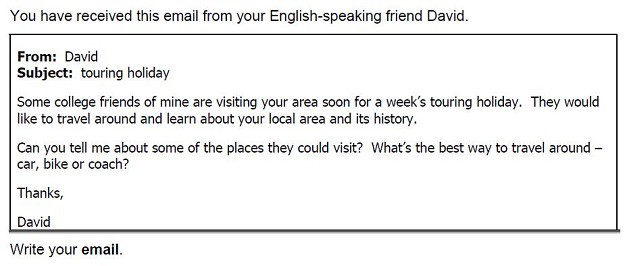
This is what a typical email writing task in the FCE exam might look like. It is an actual email that you have to reply to and, of course, we can analyse this task in exactly the way described above.
Firstly, we want to see what to include in our email and, secondly, who we are writing to in order to choose the correct register. The best way to do this is to underline the key pieces of information. Because I’m a nice teacher I’ve already completed this step for you:
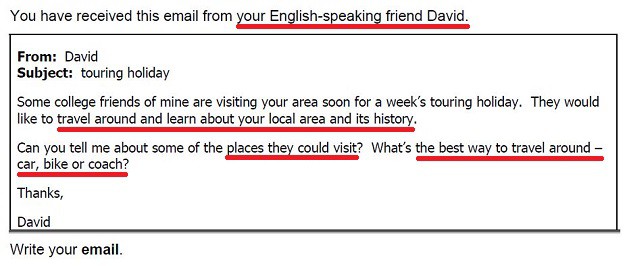
I’ve underlined the reason why David’s friends are coming to your area (“…travel around and learn about …”), which gives us a general idea of what to write about as well as two very specific things David is asking us to tell him (“places they could visit” and “the best way to travel around”).
On top of that, when you write to a friend like David you have to write in an informal style. Generally speaking, this means that you should use contractions ( e.g. I’m, don’t), colloquial expressions (e.g. tons of, ‘What’s happening?’) as well as phrasal verbs and idioms (end up, ‘Guess what!’). Later in this article I will give you a list with very useful expressions specifically for writing emails and letters so keep reading until the end 🙂 .
2. Letters
After we’ve analysed a typical task to write an email we can now check out one that asks you to write a letter. As you will see, there are similarities and differences between the two options.
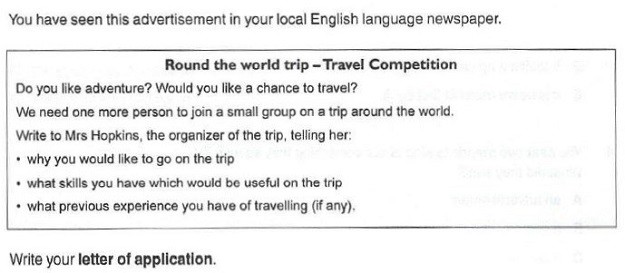
Here, we have to do the exact same two things we did with the email writing task: find out what to include in our letter (1) and who is going to read it (2).
And again, the easiest way to do this is by underlining the key pieces of information so you know what to do:
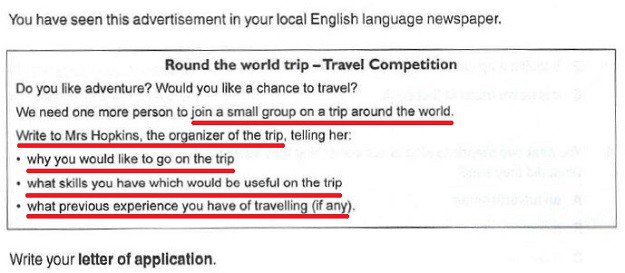
In this task you are going to write a letter of application to Mrs Hopkins. Her first name isn’t mentioned so we need to be polite and choose formal language. This means the opposite of what I told you about the email task above. Do NOT use contractions (‘I am’ instead of I’m), do NOT use colloquial expressions and even rather formal ones (e.g. ‘I am writing in order to …’) and do NOT use phrasal verbs or idioms.
At first, this can feel unnatural and you will have to practise a little bit. I often see contractions and colloquial expressions in formal writing tasks that my students give me to correct because they are not used to being so polite when writing in English. However, don’t worry, just practise formal letters regularly and it will become easier and easier.
In our example task above there are also (surprise!) three topic points that we have to include in our letter: the reason why we are interested in the trip (1), useful skills we have (2) and our previous travel experience (3).
So remember, there are always 2-3 topic points in email/letter writing tasks, but the register is usually informal in emails and formal in letters.
How to organise your email/letter
When it comes to organising emails and letters in the FCE exam, we find that, luckily, there aren’t any differences so you can learn for one while practising the other, but let’s look at our example from earlier again:

We remember that there are three topic points in the task so we can already break up our letter into three paragraphs. On top of that, we have to add an opening and closing paragraph and formula simply because that’s what we do in emails and letters (I’m sure the same is done in your native language or country as well.), so we get to five paragraphs.
Generally, an email or letter always comes in 4-5 parts:
- an opening formula and SHORT paragraph
- 2-3 topic paragraphs depending on how many topic points there are in the task
- Why would you like to go on the trip?
- What skills do you have which would be useful on the trip?
- What experience do you have of travelling (if any)?
- a SHORT closing paragraph and formula
This pattern works for every single email/letter so try to memorise this. The next time you sit down to practise you will thank your teacher Phill 🙂 .
Don’t forget to plan your email/letter
There is one thing that, unfortunately, too many candidates do wrong when they take the writing exam and even when they practise. By developing this bad habit they often waste a lot of time during the actual test and sometimes lose valuable marks.
Of course, I’m talking about making a plan before you start writing. Take a few minutes to note down the different paragraphs (see the example in the previous section on organising your emails and letters) and add just a few words to help you give your text a logical structure.
You will see how much easier it gets when you can focus on the content of your writing task instead of the organisation and logical order of your ideas.
The different parts of an email/letter
In this part we are going to do two things – I’m going to show you how to write a great email or letter based on the different paragraphs we decided to split our tasks into and then show you useful language for either type of writing – formal and informal. This way you can see one more time what the similarities and differences are between emails and letters.
Opening formula and paragraph
In English we begin an email or letter with some kind of opening. The principle is the same for both, but the language we use in formal or informal writing is different. Therefore, I wrote an opening for both tasks. Let’s start with the email.
1. Emails
Hi David,
How have you been? It’s really been ages since I last heard from you.
I’m really stoked that your friends want to come to my area to learn about its past and I hope I can give you a couple of tips.
In the opening we want to greet the person we are writing to and respond to their message in order to show the examiner that we understand what we have to do.
The email task also requires informal language so I said “Hi” at the beginning and chose an informal way of starting (“It’s really been ages …”). I also used some colloquial expressions (stoked, a couple of tips) to make sure that everything sounds as if David was our friend.
2. Letters
For the letter, the opening looks similar, but notice the differences in tone and language:
Dear Mrs Hopkins,
I am writing in regards to your advertisement which I found in the London Globe and I would like to apply to join your party on your trip around the globe.
You see that I still refer to the topic in this opening, but everything is a little bit more impersonal and formal (“Dear …”, “I am writing in regards to …”, “I would like to apply …”). However, I’m still responding to the ad and talk about the topic just as I did in the email.
Topic paragraphs
The topic paragraphs in emails and letters are very much straightforward. We want to focus on the content and correct language, once again, depending on the register we are required to use.
In general, we can give each topic point its own paragraph in which we do exactly what we are supposed to do. Of course, you can always change the order of the topic points or even combine two of them into a single paragraph, but you definitely can’t go wrong if you keep them separate.
Having said that, let’s check out what this can look like for our example tasks.
1. Emails
If your friends want to see interesting places and learn something about Barcelona, they should absolutely swing by La Sagrada Familia or Casa Batlló where they can get tons of info about one of Barcelona’s most famous people Antoni Gaudí and modernism.
In terms of getting around I would recommend grabbing one of the tourist tickets for public transport because it doesn’t cost the world and you can simply jump on all the buses, trains and even the metro, or your friends could rent a bike as everything’s close by in the city.
As I have already described several times in this article, emails are usually more informal so we want to focus on this while making sure that all the topic points are covered.
In my paragraphs above I discussed the two questions our friend David asked (what to see and how to get around) and included quite a few informal expressions and phrasal verbs, which I highlighted for you.
2. Letters
The opportunity sounds very attractive to me and I would love to join your group so as to broaden my knowledge of different cultures, cuisines and peoples.
So far, I have travelled in Europe, especially in Spain and the UK, where I met many interesting people with whom I developed friendships that I value enormously in my life.
As to what I can bring to the table, I believe that my social and cooking skills as well as my language abilities – I speak English, Spanish and German fluently – could tremendously benefit the group.
Because we want to keep our letter of application nice and formal I chose some expressions (highlighted) that we would normally not use in spoken English. This, together with avoiding contractions as well as phrasal verbs or idioms, signals formality to the examiner.
Apart from that, I decided to change the order of the topic points because I think that my skills are a very strong part of my application so I want them at the end of my letter to leave a strong last impression.
Closing paragraph and formula
Last but not least, we always finish an email or letter with a closing paragraph followed by a typical formula just like at the beginning (more on the typical language in the next section of this article).
It looks pretty similar, but, as always, there are differences between formal and informal writing, so let’s have a look.
1. Emails
Well, that’s all for now. I hope your friends are going to have a blast and drop me a line if you need anything else, OK?
Have a good one and catch up soon.
Best wishes,
Phill
The last part of my email contains a lot of informal expressions (highlighted) while closing the message nicely. That’s a beautiful informal email covering all the main points and meeting all the requirements you find in the FCE exam.
2. Letters
Thank you in advance for considering my application. I am available for an interview Monday to Friday from 8 to 11 o’clock in the morning and I look forward to hearing from you soon.
Yours sincerely,
Teacher Phill
Formal letters end a little bit differently than informal emails, but we also want to finish our message hitting the right tone and following the conventions of formal writing so I highlighted all the important expressions for you again.
Useful language for emails/letters
| formal | informal | |
| Opening formula | Dear Mr/Mrs/Ms XY, (if you know who you are writing to) Dear Sir/Madam, (if you don’t know who you are writing to) | Hi XY, Hello XY, Dear XY, |
| Opening paragraph | I am writing to … I am writing in reference to … Thank you for you letter/email. | How are you? How’s it going? How are things? How have you been? Great to hear from you! It’s been ages! |
| Closing paragraph | Thank you for considering my application. I am available for an interview … I can be contacted on [number] … I look forward to hearing from you soon / in the near future. | Well, I have to go now. That’s all for now. Anyway, I should get going. Drop me a line soon. Catch up soon. Take care. |
| Closing formula | Yours sincerely, (if you know who you are writing to) Yours faithfully, (if you don’t know who you’re writing to) Kind regards, | Best wishes, Love, Lots of love, Talk to you soon, All the best, Take care, Warm regards, |
How you email/letter is marked
Marking FCE writing tasks is like a science and for a lot of students it feels as if there is this big mystery and nobody really knows how it works. Actually, there are very clear rules that the examiners have to follow and the criteria are publicly available.
While it is possible to find all the information on your own I thought it would be a good idea to put everything together in an article for you. Check out how your writing tasks are marked by clicking here.
Now it’s time to practise
In this article I showed you how to successfully plan and structure your FCE email or letter and what you need to be careful with in terms of language and layout. It is now your turn to put all of this into practice. Even though it seems like a lot of information to keep in mind all at once, the more you exercise your writing skills, the more confident you will become.
Please let me know in the comments if there is anything I forgot to add so I can keep improving my articles.
Lots of love,
Teacher Phill 🙂

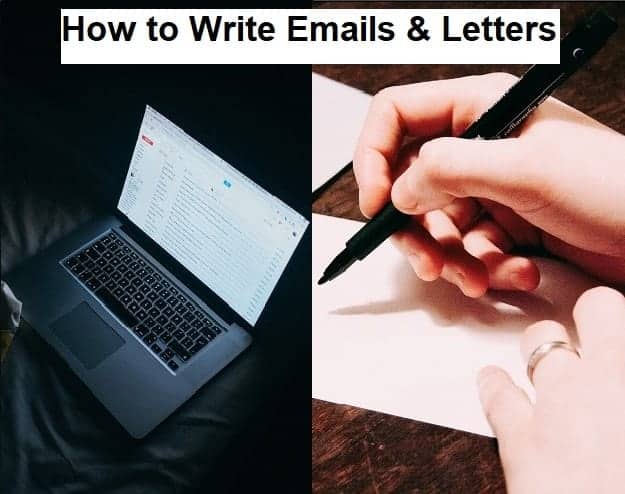
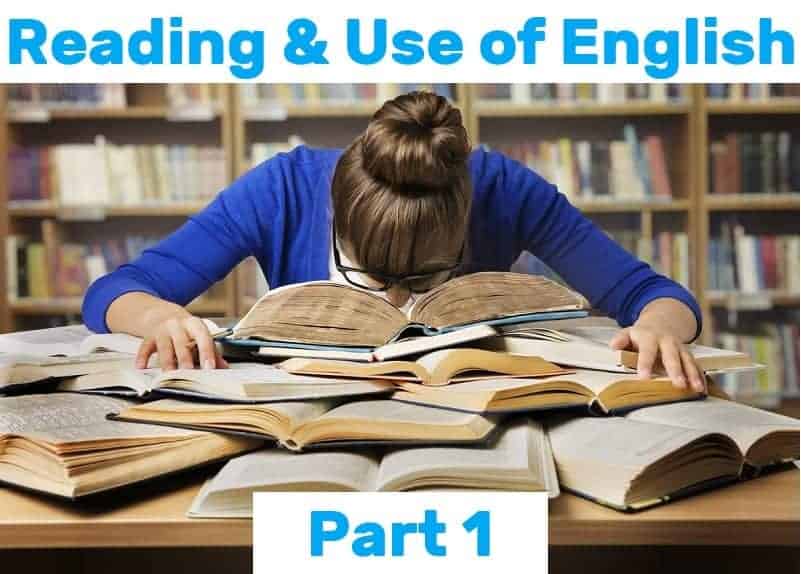
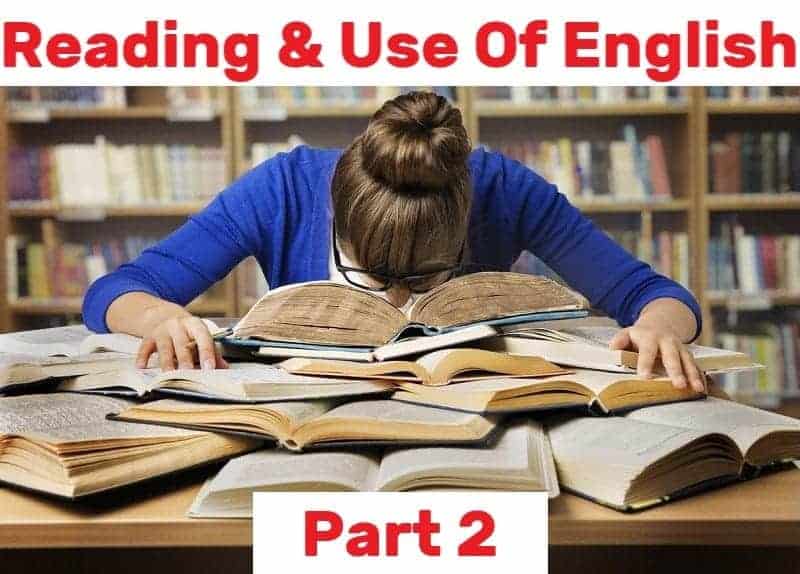
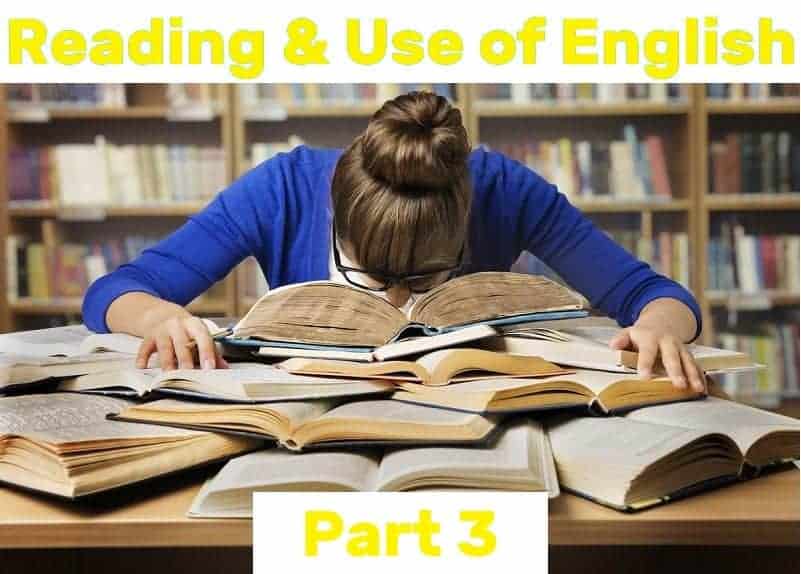
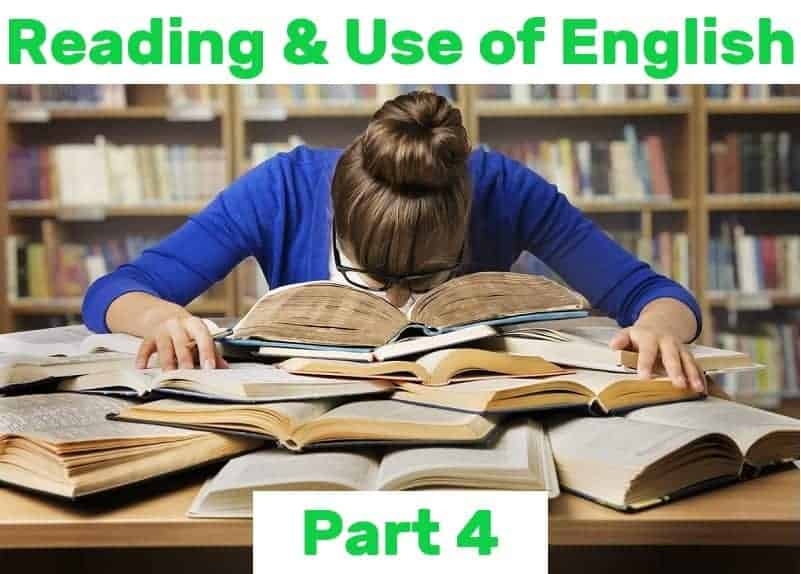








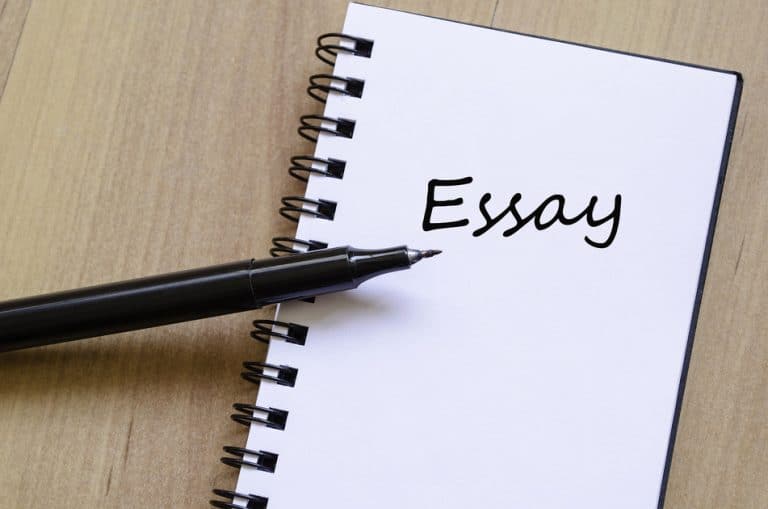
Thank you, Phill, it really helped me study for my exam!